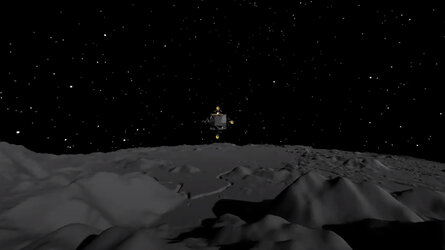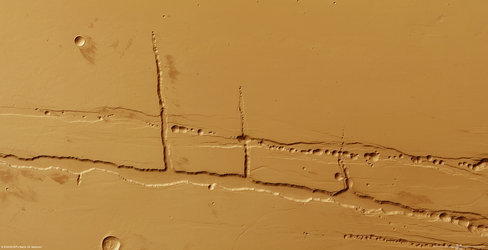Accept all cookies Accept only essential cookies See our Cookie Notice

About ESA
The European Space Agency (ESA) is Europe’s gateway to space. Its mission is to shape the development of Europe’s space capability and ensure that investment in space continues to deliver benefits to the citizens of Europe and the world.
Highlights
ESA - United space in Europe
This is ESA ESA facts Member States & Cooperating States Funding Director General Top management For Member State Delegations European vision European Space Policy ESA & EU Space Councils Responsibility & Sustainability Annual Report Calendar of meetings Corporate newsEstablishments & sites
ESA Headquarters ESA ESTEC ESA ESOC ESA ESRIN ESA EAC ESA ESAC Europe's Spaceport ESA ESEC ESA ECSAT Brussels Office Washington OfficeWorking with ESA
Business with ESA ESA Commercialisation Gateway Law at ESA Careers Cyber resilience at ESA IT at ESA Newsroom Partnerships Merchandising Licence Education Open Space Innovation Platform Integrity and Reporting Administrative Tribunal Health and SafetyMore about ESA
History ESA Historical Archives Exhibitions Publications Art & Culture ESA Merchandise Kids Diversity ESA Brand Centre ESA ChampionsLatest
Space in Member States
Find out more about space activities in our 23 Member States, and understand how ESA works together with their national agencies, institutions and organisations.
Science & Exploration
Exploring our Solar System and unlocking the secrets of the Universe
Go to topicAstronauts
Missions
Juice Euclid Webb Solar Orbiter BepiColombo Gaia ExoMars Cheops Exoplanet missions More missionsActivities
International Space Station Orion service module Gateway Concordia Caves & Pangaea BenefitsLatest
Space Safety
Protecting life and infrastructure on Earth and in orbit
Go to topicAsteroids
Asteroids and Planetary Defence Asteroid danger explained Flyeye telescope: asteroid detection Hera mission: asteroid deflection Near-Earth Object Coordination CentreSpace junk
About space debris Space debris by the numbers Space Environment Report In space refuelling, refurbishing and removingSafety from space
Clean Space ecodesign Zero Debris Technologies Space for Earth Supporting Sustainable DevelopmentApplications
Using space to benefit citizens and meet future challenges on Earth
Go to topicObserving the Earth
Observing the Earth Future EO Copernicus Meteorology Space for our climate Satellite missionsCommercialisation
ESA Commercialisation Gateway Open Space Innovation Platform Business Incubation ESA Space SolutionsEnabling & Support
Making space accessible and developing the technologies for the future
Go to topicBuilding missions
Space Engineering and Technology Test centre Laboratories Concurrent Design Facility Preparing for the future Shaping the Future Discovery and Preparation Advanced Concepts TeamSpace transportation
Space Transportation Ariane Vega Space Rider Future space transportation Boost! Europe's Spaceport Launches from Europe's Spaceport from 2012Latest

Hadley Rille on the Moon, seen by SMART-1
Thank you for liking
You have already liked this page, you can only like it once!
This strangely meandering channel, carved on the Moon, is one of the most famous features on our nearest celestial neighbour. It shot to fame in July 1971 when the two astronauts of Apollo 15 drove their lunar rover to its very edge.
Known as Hadley Rille, the feature is named after the 18th century British mathematician and inventor John Hadley. In 1721, Hadley presented a telescope that used a non-spherical mirror to the Royal Society in London. Shaped as a parabola, the mirror avoided the aberration caused by a spherical mirror, and set the shape for all telescope mirrors to come.
Hadley Rille is thought to have been carved by an ancient lava flow, dating back just over 3 billion years to soon after the Moon formed. It stretches more than 120 km, up to 1500 m wide and more than 300 m deep in some places.
From their close-up position, the Apollo astronauts photographed what looked like strata in the walls of the rille. This suggests that there were many volcanic eruptions, each building a new layer. Then, a channel of lava cut through these deposits. When it drained away, it left the sinuous rille we see today. However, planetary scientists are not entirely sure of the details of the process.
This image was taken by ESA’s SMART-1, which explored the Moon from 2004 to 2006. Its miniaturised camera demonstrated that smaller equipment could still provide first-class science.
This image was taken from an altitude of about 2000 km. It spans about 100 km and shows the region around Hadley Rille centred at about 25°N / 3°E.
SMART-1 was ESA’s first mission to the Moon. It tested new engine technologies, including a solar electric propulsion system that will carry ESA’s BepiColombo mission to Mercury in 2018.
At the end of its mission, SMART-1 was flown closer and closer to the lunar surface until it was intentionally crashed on 3 September 2006. During its mission, it had completed more than 2000 orbits of the Moon.
-
CREDIT
ESA/Space-X, Space Exploration Institute -
LICENCE
CC BY-SA 3.0 IGO or ESA Standard Licence
(content can be used under either licence)

Apollo 15

Lunar Module coming in for landing

Lunar rover driving in VR

Tractus Catena pit-chains















 Germany
Germany
 Austria
Austria
 Belgium
Belgium
 Denmark
Denmark
 Spain
Spain
 Estonia
Estonia
 Finland
Finland
 France
France
 Greece
Greece
 Hungary
Hungary
 Ireland
Ireland
 Italy
Italy
 Luxembourg
Luxembourg
 Norway
Norway
 The Netherlands
The Netherlands
 Poland
Poland
 Portugal
Portugal
 Czechia
Czechia
 Romania
Romania
 United Kingdom
United Kingdom
 Slovenia
Slovenia
 Sweden
Sweden
 Switzerland
Switzerland

























